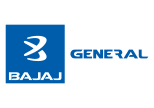Difference between NPS and ULIP
When it comes to long-term investment options, the National Pension System (NPS) and Unit Linked Insurance Plans (ULIPs) stand out as popular choices, each offering distinct features and benefits. While both aim to secure your financial future, they cater to different aspects of financial planning. This guide aims to provide a comprehensive understanding of NPS and ULIPs, helping you to evaluate which might be the best fit for your investment portfolio.
Table of Contents
What is NPS?
The National Pension System (NPS) is a government-backed retirement savings scheme in India, designed to provide a steady income after retirement. Here’s an overview of its key features:
|
Aspect |
Details about National Pension System (NPS) |
|
Purpose |
Focuses on enabling individuals to save for retirement, ensuring financial security in their post-retirement years. |
|
Contributions |
Contributions are made during working years, invested in a mix of assets like equity, government securities, and corporate bonds, based on the chosen option. |
|
Account Types |
Two types: Tier I (primary account with tax benefits for retirement savings) and Tier II (voluntary savings account with flexibility but no tax benefits). |
|
Fund Management |
Managed by professional fund managers appointed by the Pension Fund Regulatory and Development Authority (PFRDA). |
|
Withdrawal and Annuity |
On retirement, a minimum of 40% of the corpus must be used to purchase an annuity for a regular pension. The remaining funds can be withdrawn as a lump sum. |
|
Tax Benefits |
Contributions are eligible for tax deductions under Section 80C and 80CCD, with additional deductions for investments up to ₹50,000 under Section 80CCD(1B). |
|
Flexibility in Investment Choice |
Offers different investment choices and fund options, allowing individuals to tailor investments based on their risk appetite. |
NPS is particularly attractive for those looking for a disciplined and regulated way to save for retirement, with the added benefit of tax savings.
Understanding ULIPs
Unit Linked Insurance Plans (ULIPs) are financial instruments that blend the aspects of insurance and investment. These plans allow policyholders to invest in market-linked instruments such as equity and debt, while also providing life insurance coverage. The investment component of ULIPs is subject to market risks, but they offer the potential for higher returns compared to traditional insurance products.
ULIP vs NPS - A Comparison
When deciding between a ULIP and the National Pension System (NPS), understanding their distinct features is crucial. Here's a table comparing key aspects of both:
|
Aspect |
ULIP |
NPS |
|
Purpose |
Combines insurance with investment in market-linked instruments. |
Retirement savings scheme aiming to provide pension income. |
|
Investment Nature |
Market-linked; investment in equity, debt, or a mix of both. |
Investment in equity, government securities, and corporate bonds. |
|
Tax Benefits |
Eligible for tax deductions under Section 80C. Maturity proceeds are generally tax-free. |
Eligible for tax deductions under Section 80C and additional deduction under Section 80CCD(1B). |
|
Withdrawal Rules |
Partial withdrawals allowed after a lock-in period, usually 5 years. |
Partial withdrawal allowed under specific conditions. Minimum 40% corpus to be used for annuity purchase after retirement. |
|
Risk Factor |
Varies based on chosen funds; can range from low to high risk. |
Moderate; based on market performance and asset allocation. |
|
Fund Management |
Managed by insurance companies. |
Managed by professional fund managers appointed by PFRDA. |
|
Flexibility in Investment |
High; allows switching between funds. |
Limited; choice of asset allocation and fund manager. |
|
Maturity Benefits |
Dependent on market performance; potential for high returns. |
Annuity income post-retirement; lump-sum withdrawal allowed as per rules. |
|
Life Cover |
Includes life insurance cover. |
Does not include life cover. |
Who Should Invest in NPS?
The National Pension System (NPS) is particularly suitable for individuals who are looking for a secure and structured way to save for their retirement. Here are some key considerations for those thinking about investing in NPS:
- Long-Term Retirement Savers: Ideal for individuals who are focused on building a retirement corpus over a long period, as NPS investments are typically locked in until retirement age.
- Risk-Averse Investors: Suitable for investors who prefer a more conservative approach to investment, as NPS offers relatively stable returns with regulated exposure to equity.
- Regular Income Seekers Post-Retirement: Those who wish to ensure a steady pension income post-retirement will find NPS beneficial, especially with its annuity component.
- Tax Saving Objective: If you are looking to reduce your taxable income, NPS offers attractive tax benefits under Section 80C and an additional deduction under Section 80CCD(1B).
- Government Employees: Particularly beneficial for government employees who are part of the system, but it is also open to all Indian citizens.
- Disciplined Investors: Ideal for those who value a disciplined savings approach, as NPS enforces a long-term savings habit due to its lock-in nature.
Who Should Invest in ULIPs?
Unit Linked Insurance Plans (ULIPs) cater to a different investor profile, blending the benefits of insurance and investment. Here are some pointers for those considering ULIPs:
- Insurance Plus Investment Seekers: Suitable for individuals looking for life insurance cover along with the potential for higher returns through market-linked investments.
- Risk-Tolerant Investors: Those who are comfortable with market risks and fluctuations and are looking for opportunities for higher returns might prefer ULIPs.
- Flexible Investment Option Seekers: ULIPs offer the flexibility to choose and switch between different funds (equity, debt, balanced), making them ideal for proactive investors.
- Long-Term Financial Goals: Those with long-term financial goals like child’s education, marriage, or wealth creation might find ULIPs appealing.
- Tax Benefits Seekers: Like NPS, ULIPs also offer tax benefits on premiums paid and are generally tax-free on maturity under Section 10(10D).
- Investors Needing Partial Withdrawals: ULIPs can be suitable for individuals who might need partial withdrawals after the lock-in period for emergencies or other financial needs.
Both NPS and ULIPs cater to specific financial needs and objectives. While NPS is more retirement-focused with stable returns, ULIPs provide a mix of life cover and the potential for higher returns, albeit with higher risks associated with market investments.
Best ULIPs sold by InsuranceDekho
Looking for the best ULIPs to invest in? Consider the following plans:
- LIC Endowment Plus: Entry age: 90 Days – 50 Years.
- HDFC Life ProGrowth Plus: Entry age: 14 – 16 Years.
- SBI Life Smart Wealth Assure: Entry age: 8 – 60 Years.
- ICICI Pru Signature: Entry age: 0/30 Days – 60 Years.
- Bajaj Allianz Future Gain: Entry age: 1 – 60 Years.
- Aditya Birla Sun Life Insurance Fortune Elite Plan: Entry age: 1 Month – 55 Years (for five pay) - Up to 65 Years
Conclusion
When it comes to choosing between NPS and ULIPs for your investment portfolio, it’s essential to align your choice with your financial goals, risk tolerance, and investment horizon. NPS is more retirement-oriented, offering a structured approach to saving with tax benefits and relatively stable returns.
On the other hand, ULIPs provide a combination of life insurance and the potential for higher market-linked returns, along with the flexibility of fund choices and partial withdrawals. Both have their unique advantages and cater to different investment needs. Understanding these differences and evaluating them against your personal financial objectives is key to making an informed decision.
FAQs
- What is NPS?
NPS (National Pension System) is a government-sponsored retirement savings scheme in India, focuses on providing a pension income post-retirement.
- What are ULIPs?
ULIPs (Unit Linked Insurance Plans) are investment products that combine life insurance cover with market-linked investments.
- Who should opt for NPS?
NPS is ideal for individuals looking for a disciplined, long-term retirement savings plan with stable returns and tax benefits.
- Who should invest in ULIPs?
ULIPs are suitable for those seeking a combination of life insurance and the potential for higher returns through equity or debt market investments.
- Are NPS contributions tax-deductible?
Yes, contributions to NPS are eligible for tax deductions under Section 80C and an additional deduction under Section 80CCD(1B).
- Do ULIPs offer tax benefits?
Yes, ULIPs offer tax deductions on the premiums paid under Section 80C, and the maturity proceeds are generally tax-free.
- Can I withdraw from NPS before retirement?
Partial withdrawals from NPS are allowed under specific conditions, but a minimum of 40% of the corpus must be used to purchase an annuity at retirement.
- Can I make partial withdrawals from ULIPs?
Yes, ULIPs allow partial withdrawals after a lock-in period, usually 5 years.
- What kind of returns can I expect from NPS?
NPS offers moderate returns, influenced by its investment in equity, government securities, and corporate bonds.
- Are ULIPs risky investments?
ULIPs carry a level of risk that varies based on the chosen funds; equity-linked funds are higher risk compared to debt funds.




























